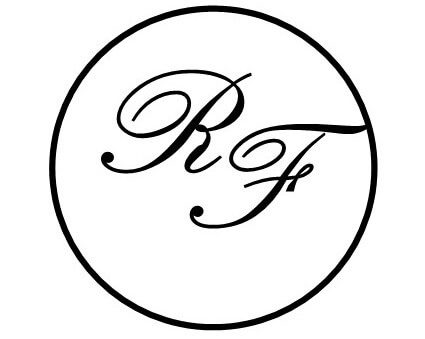From the “Archives of American Art”
Rose Fried Gallery – Art gallery; New York, N.Y. Founded in the 1940s by Rose Fried, who took over the Pinacotheca Gallery from Dan Harris, later changing the name of the gallery to reflect her ownership. Fried showed abstract art and was instrumental in introducing the American public to many abstract painters, including Mondrian and Kandinsky.
Excerpts from “Remembering Rose Fried”
~Written by her niece, fine artist, Joan Fine
Modern tradition implies that art enter our lives via the intermediaries – the dealers and directors of our art institutions. It is these “tastemakers” who, in essence, determine what art we are to see and how we are to see it. Their very choices serve to validate the new art which we eventually will learn to accept and consume. Some of these tastemakers function as responsible and effective pioneers, recognizing authenticity and innovation on the basis of their own intuition and good taste. Often, we cannot properly evaluate their contributions until after they are gone and sufficient time has passed. One of these rare pioneers was my aunt Rose Fried, who opened her first gallery on 57th Street in 1932.
Her story deserves telling, for in the thirty-eight years during which she managed her gallery, she often stood in the shadows of the artists whose work she championed. Rose was, in fact, a history-maker herself, for she helped to inaugurate and establish the modern art movement in America, introducing and launching artists such as Mondrian, Arp, Klee, Leger, Kandinsky, Balla, Ernst and Duchamp, and giving Schwitters, Sonia Delauney and Torres-Garcia their first New York exhibitions.
Rose earned a reputation, during her many years as a gallery director, for high standards and innovation. She is remembered for a total commitment to an “advanced” art, and to the need to communicate this belief to an unitiated, but receptive public. She was, in effect, an educator, and it is in this capacity that she is most vividly and consistently remembered.
Rose Fried was born in 1896, the first of ten children of Sally and Leo Fried, orthodox Jews who had earlier emigrated from Czechoslovakia and Hungary, and settled in Bethlehem Pennsylvania. As a very young girl, Rose displayed an alarming propensity toward expensive things – wanting fine silks for the family clothes that her mother sewed. Leo Fried, a cantor and a dreamer, would soon welcome the financial assistance of his eldest daughter in supporting his struggling, growing family.
At eighteen, Rose’s desire for excitement and opportunity lead her to New York. Rose began to meet young artists, poets and assorted bohemians with whom she felt a growing affinity. During the summers, she studied painting – at one time with Hans Hoffman, who found her work overly emotional. She soon abandoned her own painting for an aesthetic approach to the painting of others.
In 1932, Rose opened the Pinacotheca on West 58th Street. Previously owned by Dan Harris, a painter, it was one of the few galleries, then in existence, dedicated to the art of the avante-garde. During those early summers Rose was often to be seen on the left bank of Paris; her growing importance even then acknowledged by the artists with whom she circulated. In these first years, Rose became firmly committed to presenting to New York a “modern art” which deliberately excluded “ash-can” and social commentary schools then in the lead.
Silvia Pizitz, one of Rose’s first and best known private collectors, remembers the early years at the unique Pinacotheca. “Rose’s 1947 Exhibition entitled ‘The White Plane’, provided adventurous art lovers with their first look at the great pioneers of abstract art. It was almost a religious revelation.” For many, this show afforded the New York public their initial glimpses of artists such as Albers, Arp, Bolotowsky, Diller, Gabo, Glarner, Kandinsky, Klee, Leger, Lizzitsky, Malevich and Maholy-Nagy.
By 1947, Rose was appointed to the Board of the Societe Anonyme, whose responsibility it was to help build the prestigious collection of the Yale University Art Gallery. In the early fifties, the gallery had become, officially, the Rose Fried Gallery, and was eventually located on Madison and 68th Street.
In 1956, Rose held an International Collage Exhibition bringing 85 pioneering works of early masters to the public’s attention for the first time. Throughout the years, her reputation as a dealer of consummate taste and dedication continued to grow. Many of her artists and collectors remember her as one of the most creative dealers in the city, who felt it was her mission bring high quality art to a hungry public. Rose continued to add new artists to her gallery, including Etrog, Ajay, Yunkers, Knox Marting, Stanley Boxer, Xceron, Louise Bourgeois, Lewiton and John Ferren.
She worked tirelessly for artists under her wing, frequently lowering prices to get their works into “important” collections and museums. She was particularly proud of her role in introducing to the United States the works of the Latin American painter Torres-Garcia.
Rose’s gallery represents an era long vanished. For Rose’s artists, she was the kind of dealer who offered support and encouragement. Her mission was to present work that was original, genuine, and often, unpopular. She is remembered for her unique personality and vision – and for the courageous efforts she made, on behalf of so many of the artists who continue to enrich our lives.
